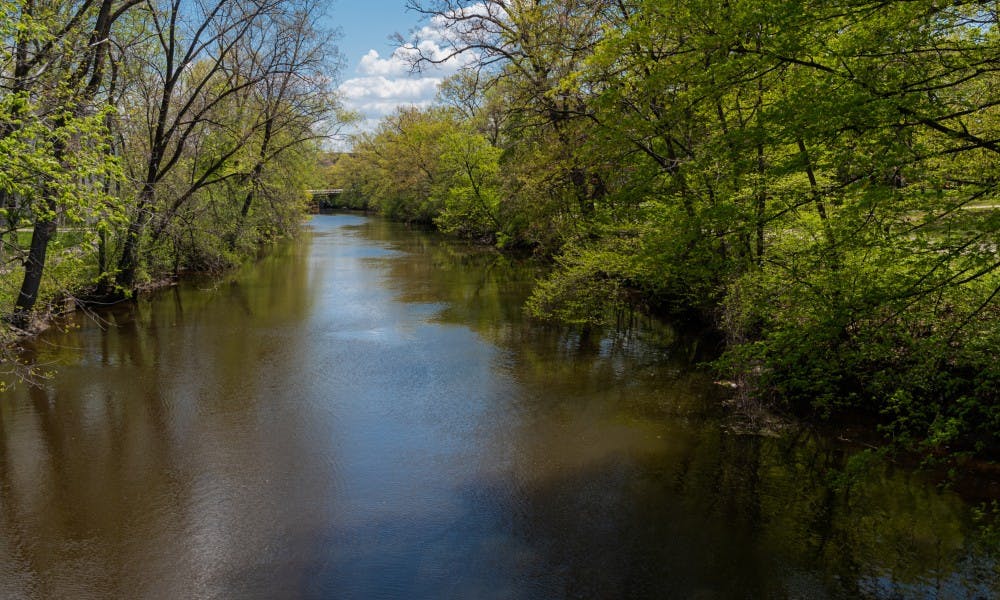Whether you want to feed the mallard ducks on a Sunday morning, go for a hike through the woods surrounding campus, take a stroll through the W.J. Beal Botanical Gardens or walk across the bridges on your way to class, every Michigan State student, faculty, alumnus and visitor has seen the Red Cedar River.
Running through the entirety of Michigan State’s campus, the Red Cedar River is such a landmark at MSU that it’s even featured in the first line of MSU’s Fight Song — "On the banks of the Red Cedar, there's a school that's known to all."
The Red Cedar helps make MSU’s campus stand out in comparison to other campuses. Not only because it’s beautiful — I know most people have seen the pictures of the sun setting over the water from the bridge on Bogue Street. People tend to post it on their Snapchat stories every few weeks — but because it has a history of being used for recreational and educational purposes, too.
MSU’s science departments take advantage of having the river nearby, which means students are given more fun and creative opportunities, like having classes outside. Breaking the routine from sitting inside a classroom for several hours is a great way to engage a group of college students.
Many people think because the Red Cedar is a murky color, something near a brown-green shade, that it is heavily polluted. At one time it was, but this is no longer true.
RELATED: 5 scenic spots on campus to visit before it gets cold
RELATED: Fishing now legal in the Red Cedar
There are many different organisms that live within the 51 mile stretch of the river, including crayfish, an assortment of flies, beetles and so on. There are even some kinds of fish present in certain areas. Something a lot of students will recognize, a subject which has arguably entered meme territory, is an ISP Lab which allows students to put on waders and step into the Red Cedar to collect samples of bugs to check for pollution rates. But don’t worry, no bugs are harmed during this process. They are returned to their habitat after being examined.
Years ago, the Red Cedar was more involved in student life, including through a freshmen vs. sophomores "tug-o-war" across the river and a Water Carnival featuring student-made floats. Nowadays, people still use the river for recreational activities. During the summer, many choose to canoe or kayak across the river. Even fishing used to be a large attraction until it was banned in the 1960s, though it has since been rescinded for a specific section of the river. Not many other universities can say the same, as they don't have the same land and nature surrounding or within their campuses.
While the Red Cedar is a beautiful sight, it also does a lot for the surrounding environment. According to Michigan State's Institute of Water Research, the Red Cedar watershed “is a diverse landscape of grasslands, wetlands, forests, agricultural, and developed residential, commercial, and industrial land. Historically the area was predominantly forested.”
But, what does that mean? What exactly is a watershed? A watershed is an area or ridge of land that separates waters flowing to different rivers, basins, or seas. For example, the Red Cedar drains into the Grand River downstream.
For being in the center of a campus of tens of thousands of students and visitors, the Red Cedar is not at all in poor condition. Since it’s a treasured part of campus, it’s well taken care of. There is rarely any trash or litter floating on or underneath the surface and wildlife continues to return year after year.
Support student media!
Please consider donating to The State News and help fund the future of journalism.
Discussion
Share and discuss “Why the Red Cedar River makes MSU unique ” on social media.




